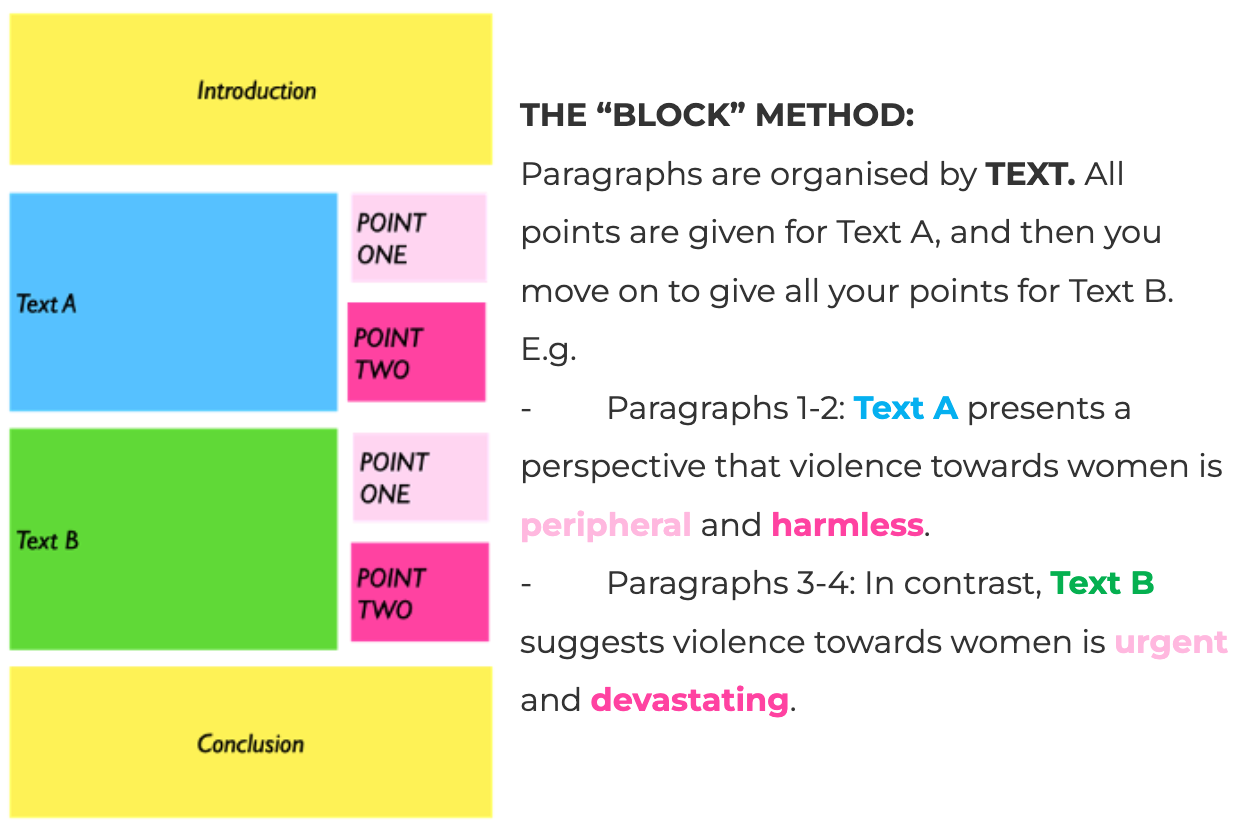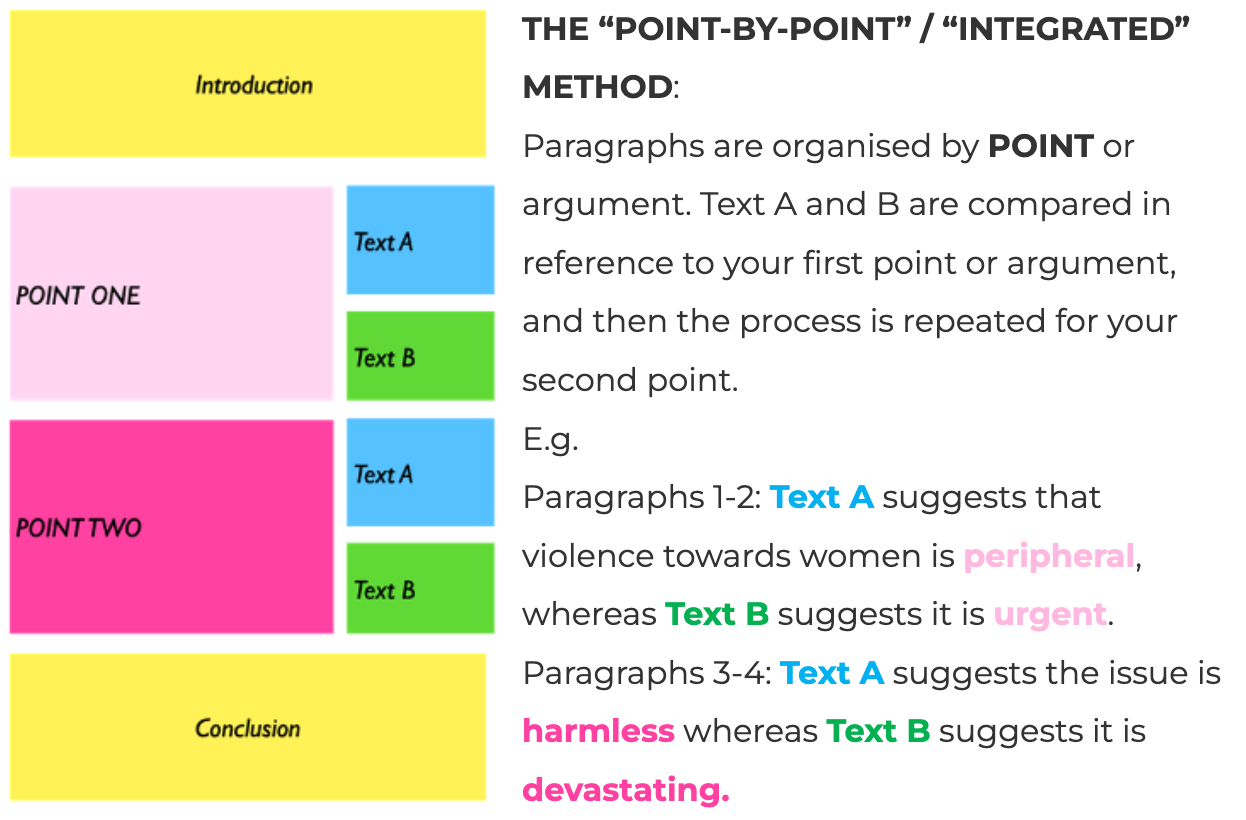Comparative writing is mostly relevant for English subjects, especially at the ATAR level. Comparatives vary between states – in VCE, the Comparative SAC asks a question specific to the texts studied. In WACE English, comparatives are simply a type of question offered under Responding and are broadly applicable across texts. In the HSC comparative writing is imbedded into Mod A - textual conversations and even in short response questions.
Nevertheless, the general premise of the Comparative Essay is universal and this article is for all English students; no matter the year level or state syllabus.
What is a comparative?
A comparative is just like any other analytical literary essay, but with a catch – instead of analysing one text, you compare two.
You will need to craft an argument which addresses what makes the two texts similar and what is different. You will need to read the essay question carefully and work out what the two texts have in common, and for which concept you should argue there is a difference.
Let’s look at some examples:
Q. Compare how two texts of different genres endorse a similar perspective.
Similar: Perspective
Different: Genre/generic conventions used
Example thesis: Texts A and B both endorse a pacifist, anti-war perspective, however, Text A achieves this through lighting and sound effects, whereas Text B employs poetic structure and rhyme scheme.
Q. Analyse how two texts employ characterisation to encourage different reader responses.
Similar: Characterisation
Different: Reader Response
Example thesis: Text A employs vivid characterisation of its protagonist to evoke readers’ empathy and affection, whereas Text B’s intense characterisation encourages a response of tension and discomfort.
Q. Compare the representation of the ‘ideal man’ in Text A and Text B
Similar: Ideal Man
Different: Representation
Example Thesis: Whilst both texts provide vivid constructions of the ‘ideal man’, Text A’s representation is an adaptable intellectual, whereas Text B represents the ideal man as stubborn and brawny.
Q. Discuss how two texts’ differing contexts of production affect their perspective on an issue.
Similar: Issue
Different: Perspective, context
Example thesis: Text A (1950), influenced by a restrictively patriarchal climate, presents a dismissive perspective that violence towards women is peripheral and harmless, whereas Text B (2018), created during the #MeToo movement, suggests that it is urgent and devastating.
For some comparatives, it might also make sense for your thesis to include the extent to which the texts are similar/different.
Writing your Comparative: Step-by-Step
1. Understand your texts and why they work together!
There’s no point comparing apples and oranges! It’s important to know why your texts complement each other for a comparative essay. What do they have in common?
2. Deconstruct the question.
Try colour-coding key terms – for example, command words, similarities and differences. E.g. Compare how two texts employ conventions of the same genre, to explore different ideas.
3. Write your thesis/contention.
This should answer every aspect of the question. If you’ve colour-coded your question, make sure each colour is addressed.
4. Gather evidence.
It’s to find relevant evidence and quotes to back up your argument! This should be a rough 50/50 split between each text.
5. Have a list of comparative language handy!
Your reader/marker shouldn’t become confused about which text you’re talking about. Here’s some great comparative language for clarity and flow:
SIMILARITIES:
- Similarly
- Likewise
- In a similar vein/fashion/manner/way
- In parallel
- Additionally
- Equally
- Both
- Comparably
- Correspondingly
- Also, as well, too
- Just as
DIFFERENCES:
- Conversely
- Contrarily
- In contrast
- As opposed to
- Otherwise
- However
- Alternatively
- Instead
- Yet, but
- On the other hand
- Whereas
- Differently
- Unlike
- Although
- Compared to
- Meanwhile
6. Organise points and paragraphing.
A comparative should have an introduction and conclusion, just like any other textual analysis essay. They’re the bread holding your essay together.
Introduction:
- Hook or global statement
- Introduce your texts (brief synopses/plot summaries, relevant contextual information)
- Thesis / Contention / Central Argument
- Roadmap of your essay (i.e. signpost what your body paragraphs are each going to cover)
Conclusion:
- Reiterate argument
- Summarise points
- Final remarks about potential relevance of argument, significance, extent of similarity of the texts, etc.
But what about the middle of the sandwich? Usually, you will have four body paragraphs, but there are a couple of different ways to structure them:
Comparative Essay Structure


The point-by-point method is usually regarded as more sophisticated and will award you better marks.
This is because the comparison is better integrated into the analysis and demonstrates a more nuanced expression. However, the block is suitable for earlier stages (e.g. Year 9/10 level), or the texts you are comparing do not align precisely per point.
If you want to reach for those very top marks, you can take the point-by-point method even further, alternating more frequently between evidence from Texts A and B for even more specific comparison. This is sometimes called…
THE RAINBOW METHOD:
My final tips for top marks (from a 99.95 graduate)
- Maintain your 50/50 text balance
- Use specific evidence
- Use terminology from the question
- Ensure your discussion of the two texts interacts – it shouldn’t feel like two separate essays awkwardly glued together
- Consider why the texts are different, particularly in your conclusion. What is the significance?
Good luck, and happy comparative writing!

Want more personalised tips to drastically improve your English mark? A private tutor can make the biggest difference!
Written by KIS Academics Tutor from WA, Poppy Bell. Poppy received a 99.95 ATAR and is currently studying Arts/Law at the University of Melbourne (Chancellor’s Scholar). Poppy tutors English, Literature, Mathematics, Modern History, and French. You can view Poppy’s profile and glowing reviews here and request her as a tutor.







